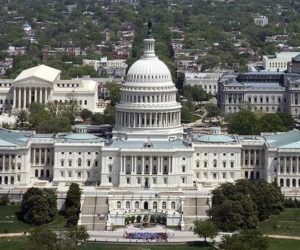If you were awake and even glancing at the news yesterday, you likely caught wind of a fast breaking kerfuffle in the ongoing health care reform debate. Republicans were excitedly talking up a supposed “leaked memo” which was – eventually – alleged to have originated from Majority Leader Steny Hoyer’s office, instructing Democrats to avoid talking about planned increases in Medicare reimbursement rates later this year which would wipe out the savings currently claimed in the CBO’s scoring. As political catnip goes, this one was pure dynamite. Unfortunately for the blogosphere, the story seems to be falling apart.
The meat of the story – that being the alleged contents of the memo – isn’t the part in question here. It’s no secret that Congress will put in the so called “doc fix” later on, just as they have done in the past. This will drive up the costs well past any alleged “savings” in the current bill and turn it into yet another budget buster. The Democrats had to torture this bill in a way that would have made Torquemada blush to come up with something that looked like a net deficit reducer.
No, the real question here is where the memo came from and if the media – both new and old – should have run with the story without some deeper source checking. Copies of the damning document apparently came from John Boehner’s communications shop, in the person of Michael Steel. (No, not that Michael Steele.) Conservatives felt that the document had an original, authentic look and feel to it, but Marc Ambinder points out why the sourcing on the story was simply not up to snuff.
I do not believe that Mr. Steel or a member of his staff created the memo. You may ask why I believe this, and my reasons won’t satisfy many of you, but here goes: I’ve know Steel for years. He is a stand-up guy and isn’t dishonest; in trickier situations, he’s told me the truth. Here he may have been overzealous, and I fell for it on a slow Friday afternoon.
I asked Mr. Steel where he got the memo; he would not reveal his source. I asked him whether he believed that the memo was an official leadership, White House or DNC document, and here is his response: “Will the Democrats do the “doc fix”? If they will, they are low-balling the cost of health care by hundreds of billions of dollars.”
That’s the Dan Rather Excuse — can’t say for sure that the memo is real, but it surely brings up real points. That’s satisfactory, I guess, for the Republicans, but it shouldn’t be. It isn’t satisfactory to me, or to my readers.
Marc hits it on the head here. Plenty of my conservative friends still enjoy bringing up the Dan Rather story to this day, and “fake but accurate” has become a common talking point when discussing alleged stories about documents which later fall through. And for this story as well, fake but accurate isn’t going to cut it. If Steel didn’t want the name of his source revealed in public, he could still have told Ambinder who could have then verified it to his satisfaction and let us know that he found a Democratic source, leaving it up to us to determine how much we trusted his journalistic integrity. Steel’s answer just casts more doubt on the story and leaves it unfit for print.
Should the conservative bloggers have known better? That one is a tougher call. Plenty of folks ran the story, including my friend Ed Morrissey at Hot Air. When the challenges to the document’s authenticity arose, he updated with this:
When Politico went live with this article, I had confirmed with two people I know on the Hill that they had seen this being passed around. Did it come from Democrats, or from Republicans? I can’t answer that, but I did confirm with two sources that it exists.
Let’s face it… that’s a lot more checking than many bloggers would (or could) do, and this isn’t one of those totally unsourced, unchecked stories that ruin a blog’s reputation, such as what happened to Radar Online after the John Roberts resignation hoax. But still, I think we have to hold Politico to a bit of a higher standard. Ed at least checked with “two people on the hill” but we don’t know who they are. Were they Democrats from Hoyer’s office? If so, that would pretty much put the issue to rest. But I somehow doubt Steny’s staff would be all that eager to chat with Ed about things damaging to the Democrats.
Plenty of authors confirmed that somebody had “seen the thing” and that it “existed.” Of that I have no doubt. Back in my Navy days I had a roommate who, for reasons I never figured out, had a framed picture of Whistler’s Mother on his wall. I saw it myself and can absolutely confirm that it existed. I can also absolutely confirm that it was a poster on shiny paper and not an original oil painting from the 1870’s. The real question here isn’t whether anyone actually had the memo. The question is it’s origin, as Marc Ambinder pointed out.
Again, should we have known better? Hindsight is always 20-20, so looking back, some bits of this really did look like they fell into the “too good to be true” category. The language was just a bit too overt in the tone of, “For God’s Sakes, let’s be sure to deceive the public and not talk about our not-very-secret plan to jack up the costs later!” I would hope that none of our regular TMV readers are wearing rose colored glasses leading them to think that our congressional leaders don’t regularly spin things and play fast and loose with the particulars to make their own side look good and their opponents look bad. But by this time, most of the people still drawing a paycheck on the hill should know better than to publish anything putting it so blatantly.
Let’s say you were reading an alleged document about Democrats worrying over the effect of health care reform on the mid-term elections. It might say, “we need to remain aware of poll numbers showing unfavorables regarding this bill which could negatively impact some contested races this fall.” Or, it might pull a quote directly from Mel Brookes’ classic, Blazing Saddles, and say, “Gentlemen! We have to protect our phoney baloney jobs!”
Which one would you rather believe? I’d like the second one because it makes for much better headlines and a lot more fun. But I’d be more inclined to think the first one was real.
In the end, I suspect that this memo is going to fall into the Dan Rather, “fake but accurate” mold. The facts about the “doc fix” are almost certainly “accurate” but the “fake” part just eats up the story entirely.
















